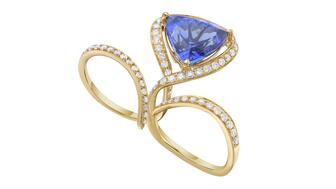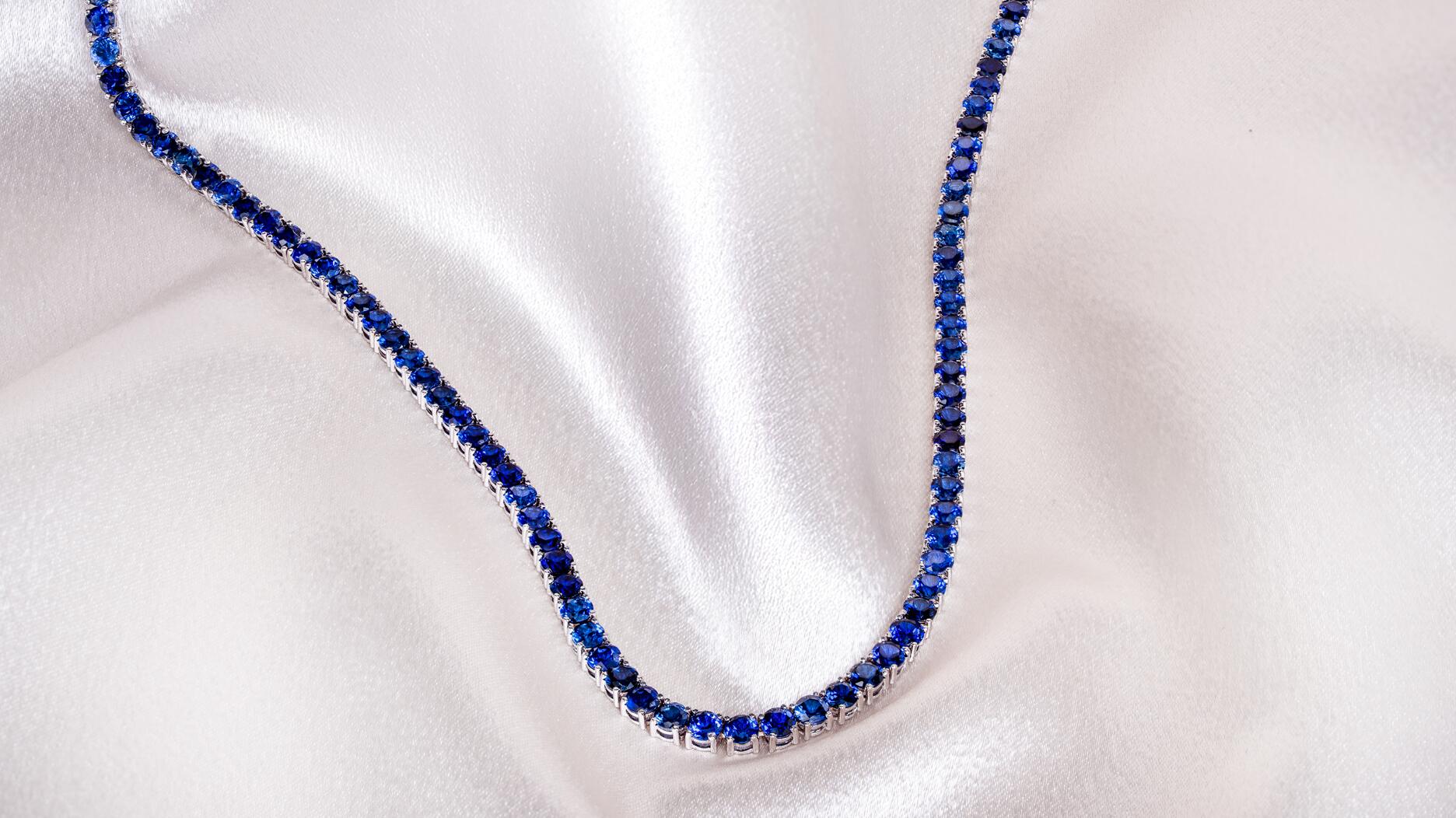Carlos Jose Hernandez and Joshua Zuazo were sentenced to life without the possibility of parole in the 2024 murder of Hussein “Sam” Murray.
5 Tips from the Southeast’s ‘Jeweler of the Year’
The owners of the Cumberland Diamond Exchange talked with National Jeweler about hiring the right people and how long customers spend in their jewelry store. (Hint: It’s not long.)

As trade journalists, I think we too often see stories come in, such as this one spotted in the Marietta (Ga.) Daily Journal, and we miss an opportunity to reach out to the retailer and ask them one simple question: What are you doing right?
But not this time; my rampant Olympic fever broke just long enough for me to catch up with Mark, Rhonda and Melissa Jacobson, the husband-wife-daughter team behind the Cumberland Diamond Exchange in Smyrna, Ga., a suburb of Atlanta.
Cumberland Diamond Exchange just received the prestigious “Jeweler of the Year” award from the 24 Karat Club Southeastern United States at the organization’s annual banquet, held Aug. 8.
The week after the banquet, I interviewed Mark, Rhonda and Melissa via phone. Here’s what they had to say about what they believe has made their first-generation, family-owned jewelry business so successful.
1. You can’t just write a check. The Jacobsons make giving back a hallmark of their business and, in fact, it’s written in the store’s mission statement, which reads: “The benchmark of our success is not measured by the longevity of our business, but the relationships we establish with you and the impact we make in the community.”
Giving back, however, is not just about writing a check and (literally) mailing it in or donating an item for a raffle, Rhonda says.
You have to attend the events, shake hands with people and, most of all, chose charities about which you are truly passionate. When your generosity is heartfelt, it comes back to you tenfold.
For Cumberland, this includes the YMCA Northwest Georgia, the American Cancer Society’s Pink Ribbon and SafePath Children’s Advocacy Center, an organization that aids children who have been victims of abuse.
“You don’t give to get,” Rhonda says. “We feel obligated; we’re blessed and we feel obligated to bless others.”
2. Aim for perfection, or as close as you can get to it. In other words, try to be the Simone Biles of presentation and customer service.
Don’t overpromise and underserve, says Mark. If a customer comes in with a repair, finish it while they wait, if possible, or tell them they
Another piece of advice he had, which was echoed by Peter Smith in his future of retail column: get the customer in and out of your store as quickly as possible.
Mark says that the old adage of “the longer they stay, they more they’ll buy,” is just that today: old. Outdated.
While the store does have some “regulars” who like to come often and linger long, in general they try to do short presentations and get to the point quickly, especially with men, who generally don’t like to shop for more than 15 minutes.
Having observed my father sitting on many a mall bench waiting for my mother and I, I’d have to say I don’t disagree with that one.
3. Bring in the next generation. “It’s paramount to have the young professionals in (the business) and involved,” says Rhonda. “They have a whole different pulse on the market.”
For Cumberland Diamond Exchange, that is their 26-year-old daughter Melissa, who came on to redesign the store’s website so it was responsive and is now the store’s marketing manager, handling email marketing, social advertising and doing some sales.
Melissa does a monthly e-newsletter for the store, which features a bride of the month each time, and also does #WeddingWednesday on social media, taking advantage of the alliterated hashtag to get a testimonial from a bride who was their customer. She says they’ve gotten a number of referrals from #WeddingWednesday.
“We couldn’t train anyone to do a better job than she does,” her mother says.

4. Cultivate relationships. “It’s not always about the price,” Mark says, noting that these days, you can always find a lower price online if you look hard enough. “(People) wouldn’t buy at Tiffany’s if it was about the price.”
Jewelers need to establish relationships within their community by being involved in charities (see No. 1 above) and by joining other organizations such as the local chamber of commerce.
For Rhonda, it always comes back to one of her favorite quotes from the late poet Maya Angelou: “I’ve learned that people will forget what you said, people will forget what you did, but people will never forget how you made them feel.”
“That’s how we run this business,” she says. “That’s how we treat our employees. That’s how we treat our guests who walk through the door. It’s all about relationships, and you can’t have relationships without feeling, in my opinion.”
5. Hire the right people. Right before we got off the phone, Rhonda had something to add; she wanted to mention, and to thank, the people who work for them. “We couldn’t run the store without them,” she says.
She says they look to hire people who, quite simply, love people.
“We can train them in the jewelry business but if you don’t like people, it’s impossible for you to have the patience to serve people,” Rhonda says. “They’ve (your employees) got to be people-oriented.”
The Latest

Yood will serve alongside Eduard Stefanescu, the sustainability manager for C.Hafner, a precious metals refiner in Germany.

The New Orleans jeweler is also hosting pop-up jewelry boutiques in New York City and Dallas.

How Jewelers of America’s 20 Under 40 are leading to ensure a brighter future for the jewelry industry.

Set in a Tiffany & Co. necklace, it sold for $4.2 million, the highest price and price per carat paid for a Paraíba tourmaline at auction.


The jeweler’s “Deep Freeze” display showcases its iconic jewelry designs frozen in a vintage icebox.

Take luxury gifting to new heights this holiday season with the jeweler’s showstopping 12-carat sphene ring.

Roseco’s 704-page catalog showcases new lab-grown diamonds, findings, tools & more—available in print or interactive digital editions.

This year's theme is “Unveiling the Depths of the Ocean.”

In its annual report, Pinterest noted an increase in searches for brooches, heirloom jewelry, and ‘80s luxury.

Starting Jan. 1, customers can request the service for opal, peridot, and demantoid garnet.

The 111-year-old retailer celebrated the opening of its new location in Salem, New Hampshire, which is its third store in the state.

The new catalog features its most popular chains as well as new styles.

The filmmaker’s personal F.P. Journe “FFC” prototype was the star of Phillips’ recent record-setting watch auction in New York.

The new location in the Design District pays homage to Miami’s Art Deco heritage and its connection to the ocean.

Inflations, tariffs, and politics—including the government shutdown—were among consumers’ top concerns last month.

“Longtime favorite” presenters, as well as first-time speakers, will lead talks and workshops at the annual event in Tucson next year.

Silas Smith of Meridian Metalworks won the challenge with his pendant that blends Australian and American landscapes.

The sale of the 31.68-carat, sunset-hued stone was part of Sotheby’s first series of events and auctions in Abu Dhabi.

Most customers who walk into your store this month have made up their minds. Your job is to validate their choice, Emmanuel Raheb writes.

The collection features characters and motifs from Ukrainian folklore, including an enchanted mirror and a magic egg.

MatrixGold 3.11, the newest version of the jewelry design program, offers more flexibility, precision, and creative control.

The pavilion will be part of the 2026 JA New York Spring show, scheduled for March 15 to 17.

Kadet, a 1994 National Jeweler Retailer Hall of Fame inductee, helped grow the family-owned retailer in the Chicago area and beyond.

Billed as the world’s smallest wearable, Lumia Health’s new smart earrings have a health tracker subtly embedded in the back.

Don’t let those with December birthdays feel blue. Help them celebrate their month with blue zircon, turquoise, and tanzanite.

The new pink sapphire version of the piece dances with its wearer in the brand’s “Icons After Dark” holiday campaign.


























